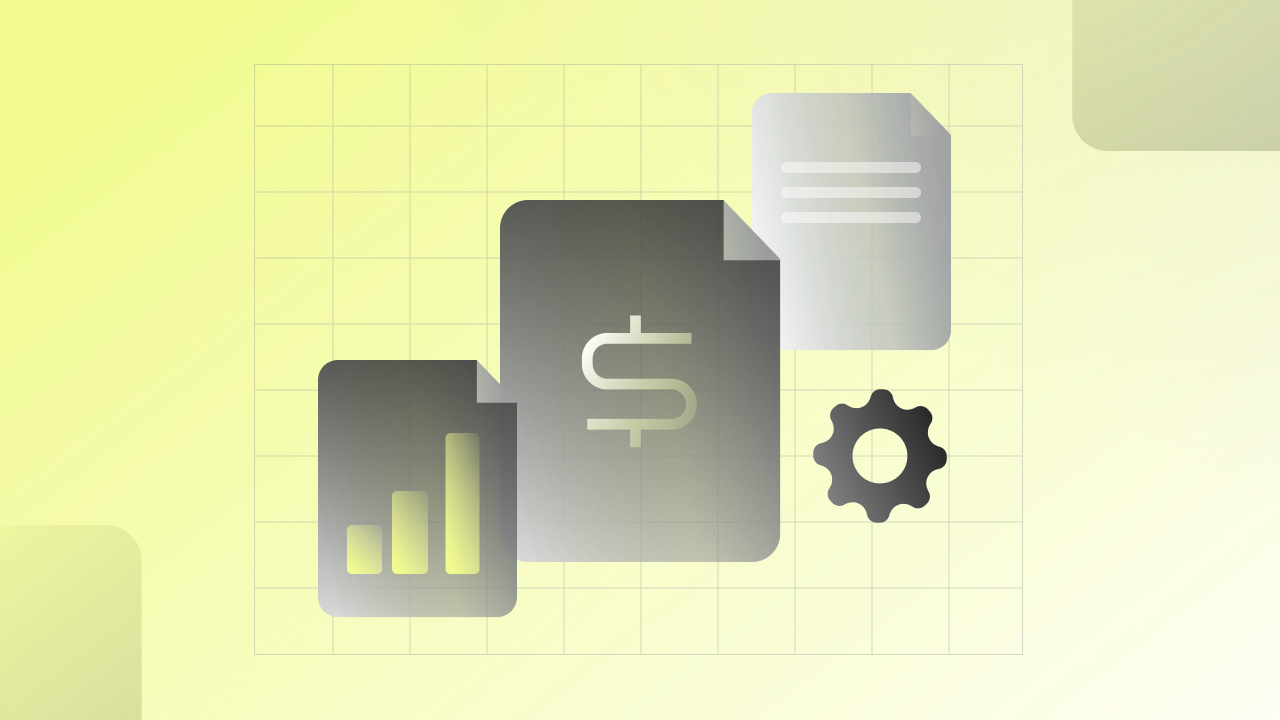
The Pulse of the Enterprise: The Role of Financial Reporting
In a large enterprise, financial reporting is the central nervous system. It connects every part of the business, from sales and operations to marketing, with the critical data needed for decision-making. When this system is healthy, the business can respond to market changes with agility and confidence. When it is ailing—plagued by manual data entry, disconnected spreadsheets, and cumbersome reconciliation—the entire organization suffers from a slow and inaccurate flow of information. The traditional, manual process is an anchor holding back a company’s ability to be truly competitive. This is the fundamental challenge that Financial Reporting Automation is built to address.
This article is for the CFO, controller, and technology leader who recognizes that the future of finance is not about faster spreadsheets. It’s about a complete transformation of the financial reporting process into an intelligent, autonomous system. We will explore a new approach to automating finance processes that moves past brittle, programming-dependent tools. It’s a strategy that empowers finance teams to heal the internal systems, shifting their focus from manual data entry to strategic analysis and insight.
The Ailing System: Symptoms of Manual Reporting
For years, finance teams have relied on a mix of legacy tools and manual workarounds to manage the reporting cycle.
- Clogged Data Channels: Data is often fragmented, living in disconnected ERPs, CRMs, and hundreds of spreadsheets. This creates significant friction and delays, as finance professionals spend weeks just collecting and consolidating data.
- A Slow and Unreliable Pulse: The manual process is not only time-consuming but also prone to human error, which can have a ripple effect throughout the entire business. A single mistake in reconciliation can corrupt a final report, leading to poor decision-making.
- Overburdened Professionals: This is the most critical symptom. Highly skilled finance professionals are forced to act as data janitors, spending their time on menial, repetitive tasks instead of providing the strategic insights their organizations need to grow.
A modern Financial Reporting Automation strategy demands a solution that is intelligent, adaptable, and precise. It must be able to understand the intent of a process and handle exceptions on its own, without relying on brittle, programming-dependent tools.
A New Blueprint for an AI-Powered Central Nervous System
The next generation of Automated financial reporting is not a static tool; it is an intelligent, autonomous agent. This agent can perceive its environment, reason through complex workflows, and act across multiple systems to get a job done. Kognitos has pioneered this agentic approach, providing a platform designed for the precision, transparency, and adaptability that finance requires. It is not a generic AI platform or a rigid rule-based system. It is a strategic solution for automating finance processes. The key is to transform the traditional, manual system into a healthy, AI-powered central nervous system.
- Automation in Natural Language
Kognitos eliminates the gap between business needs and technical commands with “English as code.” Finance professionals can type processes in plain English, and the platform automatically documents and automates workflows, removing the need for programmers. This is the new way of implementing financial reporting automation.
- Neurosymbolic AI for Precision and Reasoning
Financial reporting demands accuracy. Kognitos’s patented neurosymbolic AI handles errors and new line items, combining symbolic AI’s reasoning with generative AI’s power. When encountering unfamiliar scenarios, it uses its Guidance Center to involve human experts, learning from their input and automatically updating processes via its Process Refinement Engine. This ensures robust, resilient automation for finance operations. This is a significant step forward in automating finance processes.
- A Unified Platform for a Holistic Strategy
A modern Financial Reporting Automation strategy requires a unified platform. Kognitos offers built-in document and Excel processing, browser automation, and connectors to hundreds of enterprise applications. A single AI agent can manage complete workflows, from legacy ERP data to modern accounting systems. This approach consolidates the tech stack, reduces complexity, and ensures a cohesive automation strategy for finance teams. This is how automated financial systems can truly improve operational efficiency.
Treating the Symptoms with AI
To understand the full potential of Financial Reporting Automation, we must look at the specific functions where it can have the greatest impact. Here are some key examples of how intelligent AI agents can transform finance operations.
Data Collection and Consolidation
The most time-consuming part of the reporting cycle is collecting data from a fragmented tech stack.
- AI Agent Use Case: A Kognitos AI agent can automatically log into your ERP, download a trial balance report, extract key data from a PDF, and consolidate it into a central spreadsheet. This ensures all the necessary data is in one place, ready for analysis.
- Impact: Dramatically reduces the time and effort spent on manual data entry, improving data accuracy and providing real-time insights for better decision-making.
Reconciliation and Validation
Ensuring data integrity is critical for producing accurate financial statements.
- AI Agent Use Case: An agent can automatically compare transaction data from a bank statement with records in your ERP. It can then flag any discrepancies for human review, ensuring a full reconciliation before the financial statements are finalized.
- Impact: Minimizes human error, improves the accuracy of financial statements, and strengthens compliance.
Report Generation and Distribution
The process of creating and distributing routine reports is a repetitive, time-consuming task.
- AI Agent Use Case: A finance leader can use a simple command to an agent to automate financial statements, such as a quarterly budget variance report. The agent automatically pulls the necessary data, compiles the report in the required format, and distributes it to stakeholders via email or a messaging platform.
- Impact: Speeds up the reporting cycle, provides stakeholders with timely and accurate information, and frees up finance professionals to focus on analysis.
The Benefits of Automated Reporting
The strategic deployment of automated financial reporting brings a host of measurable benefits that go far beyond simple cost reduction.
- Improved Operational Efficiency: By automating back-office processes, finance professionals can significantly reduce the time spent on repetitive tasks, allowing them to focus on higher-value work. This is a core benefit of automated reporting.
- Enhanced Accuracy and Compliance: Automating data collection and reconciliation reduces the risk of human error, leading to more accurate financial statements. The transparency of a platform like Kognitos provides a clear audit trail, ensuring compliance.
- Reduced Costs and Sustainable ROI: Automating manual workflows directly translates to reduced operational costs. The dynamic nature of Kognitos’s AI agents ensures that these savings are sustainable over time, as the automations continuously improve without requiring a constant investment in maintenance.
- Empowered Employees: By offloading mundane tasks, automated financial systems empower employees to take on more strategic roles, improving job satisfaction and reducing burnout.
Addressing Implementation Hurdles with Precision
Adopting AI is not without its challenges. The biggest hurdles are often legacy systems, data fragmentation, and a reliance on rigid, rule-based automation. The challenges in automating financial reporting include:
- Integrating disparate systems: Many companies use a mix of legacy and modern platforms.
- Data quality: Automation is only as good as the data it processes.
- The need for transparency: The finance industry requires a clear, auditable trail of all actions.
Kognitos’s platform is designed to mitigate these. Its ability to work with unstructured data and integrate with both modern and legacy systems ensures that a company can begin its AI journey without a complete overhaul of its existing infrastructure. Its natural language interface helps overcome the skills gap, as employees don’t need to be programmers to build and use automations.
The Bio-Digital Future of Finance
The future of financial reporting automation is not a world without human professionals. It is a seamless, strategic partnership between intelligent AI agents and human expertise. The ultimate role of AI in finance is to empower human professionals with better tools, enabling them to focus on what truly matters: strategic analysis, forecasting, and business partnership.
As the industry continues to evolve, the distinction between manual work and strategic insight will blur. The data from various systems will flow instantly into the administrative systems, triggering intelligent workflows that ensure a smooth and compliant operation. The ability to build and grow an AI-driven back-office is the key to unlocking true operational excellence and securing a competitive advantage in the future.
Discover the Power of Kognitos
Our clients achieved:
- 97%reduction in manual labor cost
- 10xfaster speed to value
- 99%reduction in human error
Automated financial reporting refers to the use of technology to streamline the entire process of collecting, consolidating, and reporting financial data. This moves finance teams away from manual, spreadsheet-based work toward an intelligent, system-driven workflow. It includes automating data collection, reconciliation, and the generation of reports to improve accuracy and efficiency.
Financial reporting processes are the sequence of steps a finance team takes to generate and distribute financial statements and reports. These processes typically include:
- Data Collection: Gathering data from various systems like ERPs, CRMs, and spreadsheets.
- Reconciliation: Verifying the accuracy and consistency of data from different sources.
- Consolidation: Bringing data together to create a unified view.
- Report Generation: Compiling the data into structured reports and statements.
Distribution: Sharing the final reports with stakeholders.
The top benefits of automated reporting are numerous and impactful. They include:
- Time Savings: Automating manual data entry and reconciliation frees up valuable time for finance professionals.
- Improved Accuracy: Eliminating human error leads to more accurate financial statements and reports.
- Enhanced Compliance: Automated processes provide a transparent, auditable trail of all actions, which is essential for regulatory compliance.
- Better Decision-Making: Faster reporting cycles and real-time data access enable leaders to make more informed decisions.
Cost Reduction: Automating repetitive tasks reduces operational costs and improves ROI.
The challenges in automating financial reporting include integrating new automation tools with a mix of modern and legacy systems, managing data fragmentation across different platforms, and addressing data quality issues. A significant challenge is the rigidity of traditional automation solutions, which often break when a process changes. It is also a challenge to ensure that the chosen automation platform offers the transparency and auditability required for finance.
Tools for Financial Reporting Automation range from simple spreadsheet macros and business intelligence tools to advanced AI platforms. While macros offer basic automation, they are often brittle. Modern solutions include cloud-based financial management software and intelligent, autonomous AI platforms like Kognitos. These advanced tools can orchestrate complex, end-to-end workflows and work with unstructured data, providing a more robust and scalable solution for financial teams.
The best practices for implementing financial reporting automation involve a strategic and phased approach. This includes:
- Start with a Clear Vision: Define your goals and what success looks like.
- Identify High-Impact Processes: Focus on automating repetitive, time-consuming workflows first to demonstrate quick ROI.
- Choose the Right Platform: Select an AI platform that is intelligent, transparent, and empowers business users.
- Start Small and Scale: Begin with a pilot project and then gradually scale the solution across the organization, building momentum and buy-in.
The future of financial reporting automation is a seamless, strategic partnership between intelligent AI agents and human expertise. We will see a shift from simple task automation to a holistic, agentic approach where AI agents can manage complex, end-to-end back-office processes and adapt to real-time changes. The future will be characterized by a new level of integration, where data from various systems flows instantly into the administrative systems, triggering intelligent workflows that ensure a smooth and compliant operation.
xamples of financial reporting automation include:
- Automating the Monthly Close: An AI agent automatically pulls a trial balance from an ERP, reconciles it, and generates a monthly closing report.
- Budget Variance Analysis: An agent automatically collects actual spend data and compares it to the budget, creating a variance report for a finance leader.
- Accounts Payable: An agent processes vendor invoices, cross-references them with purchase orders, and initiates payment, and then automatically posts the transaction to the general ledger.
- Compliance Reporting: An AI agent automatically gathers data from various systems to generate reports required for regulatory compliance.








